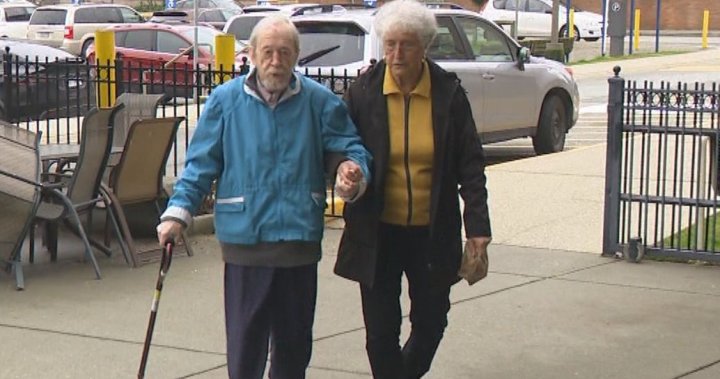A Senior’s Struggle for Housing: From Hospital Stays to a New Home
James Cullina, a 95-year-old resident of White Rock, British Columbia, recently experienced a tumultuous journey in securing stable housing. His story began at the Fresh Slice Pizzeria, where he shared a meal, a stark contrast to the anxiety and uncertainty that had clouded his previous months. Cullina’s predicament arose after he exhausted his financial resources, leaving him unable to afford the rent at Sunnyside Manor, his independent living residence. With no place to turn, he sought refuge in the emergency department of Peace Arch Hospital, a temporary solution to a deeply rooted problem. His stay at the hospital, though providing immediate shelter, highlighted the vulnerability of seniors facing financial hardship and the limitations of emergency services as long-term housing solutions.
The hospital, designed for acute medical care, became Cullina’s makeshift home for several days. This situation underscored the complexities of the housing crisis, especially for elderly individuals living on fixed incomes. The rising cost of living, coupled with limited affordable housing options, places seniors like Cullina in precarious positions, forcing them to rely on emergency services for basic needs. This reliance places a strain on the healthcare system, diverting resources from medical emergencies to address systemic housing issues. Cullina’s experience reflects a broader societal challenge, prompting a conversation about accessible and affordable housing for seniors and the need for preventative measures to avoid such crises.
A glimmer of hope emerged through the unwavering support of Cullina’s friend and advocate, Anna Cunico. Cunico embarked on a determined quest to find suitable accommodation for Cullina, recognizing the urgency of his situation. However, the search proved far from easy. The scarcity of affordable housing options, particularly for seniors with limited income, presented significant obstacles. Cunico’s persistence highlighted the importance of social support networks and the crucial role of advocates in navigating complex systems on behalf of vulnerable individuals. Her dedication underscores the need for accessible resources and support systems designed to assist seniors in securing stable housing.
The tireless efforts of Cunico eventually bore fruit. Just before Christmas, Cullina received the news he had long awaited: a place had been secured for him at the Dr. Al Hogg Pavilion. Moving into the pavilion marked a significant turning point in Cullina’s journey, offering him a sense of stability and belonging. This transition represented more than just a roof over his head; it symbolized a return to dignity and the prospect of a more secure future. Cullina’s relief and renewed hope underscored the transformative power of safe and affordable housing, allowing individuals to reclaim their lives and focus on their well-being.
Upon settling into his new home, Cullina expressed a profound sense of relief and gratitude. His words, "It feels a little bit more (like) a human being," captured the essence of his experience, highlighting the fundamental human need for secure housing. The pavilion provided more than just physical shelter; it offered a sense of community, belonging, and the opportunity to rebuild his life. This renewed sense of humanity resonated deeply, emphasizing the importance of housing as a foundation for overall well-being.
Cullina’s story is a testament to the resilience of the human spirit and the power of community support. His journey, from the uncertainty of the hospital emergency room to the comfort of the Dr. Al Hogg Pavilion, represents a triumph over adversity. This experience serves as a poignant reminder of the challenges faced by seniors in securing affordable housing and the vital role of advocates and community support in addressing this growing concern. Cullina’s story emphasizes the need for comprehensive solutions that ensure safe, affordable, and accessible housing for all seniors, allowing them to live with dignity and security. His story ends on a hopeful note, expressing his desire for a long life, a testament to the transformative impact of stable housing on an individual’s well-being and outlook on the future.

